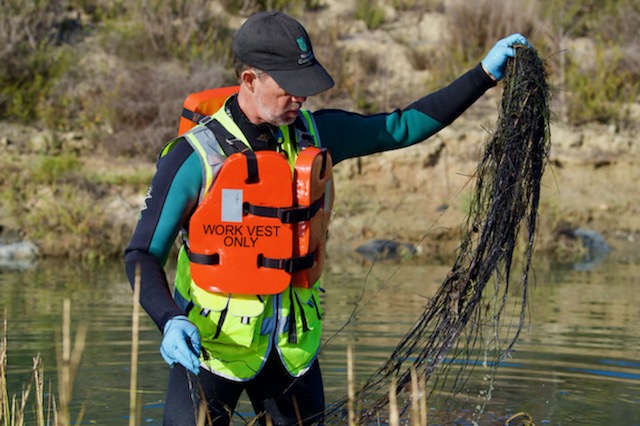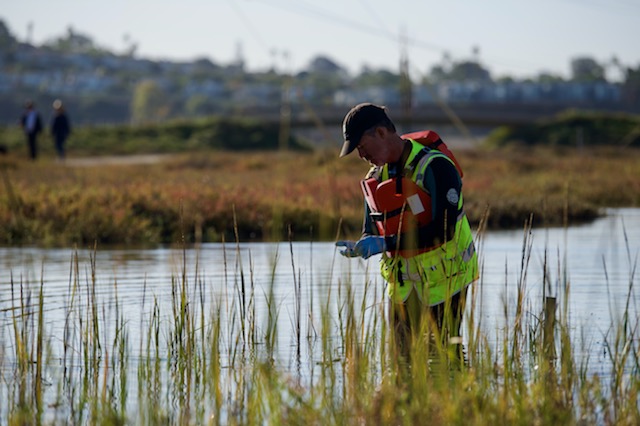San Elijo Lagoon Inlet Facing Possible Closure
Follow ( 0 Followers ) X Follow E-mail : * Follow Unfollow

A few weeks ago, you may have learned how San Diego County’s wetlands were receiving tar balls entering their inlet channels. We wrote about our initial response on October 10: Tar Ball Monitoring + Removal.
When it comes to emergent environmental stressors, know that your Nature Collective is on it. Sometimes, that means working underwater at a moment’s notice!
Doug Gibson, our Executive Director + Principal Scientist, coordinated with the U.S. Coast Guard and California Fish and Wildlife OSPR (Office of Spill Prevention and Response)-led response teams to monitor and remove the tar balls.

Above: Doug Gibson slipped into a wetsuit and flotation vest and entered the tidal channel to personally remove what he could see. Beginning the week of October 8 several removal and monitoring sessions occurred where tar balls attached to drifting aquatic plants along tide lines and underwater.
The tar balls were mostly entangled in seaweeds and sea grasses that naturally wash in and out of the lagoon during high and low tides. We experienced higher than normal tides the week of the response. So, a little farther into the West and Central basins, collection continued.
What was captured out of the lagoon by booms helped slow the entrance of the petroleum “blobs”. It is still out there, but with in-the-water work and continuous monitoring, we have our hands and eyes on what is left. We feel confident that San Elijo Lagoon will naturally work this out, which is the amazing beauty of an estuary that filters sediments and pollutants through its ecosystem functions and tidal flushing.
We thank Doug for his expertise and passion in keeping San Elijo Lagoon as healthy as it can be. And we thank you for supporting Nature Collective in good times … and when help is urgently needed.
Follow ( 0 Followers ) X Follow E-mail : * Follow Unfollow
Follow ( 0 Followers ) X Follow E-mail : * Follow Unfollow